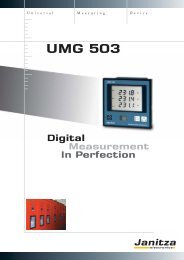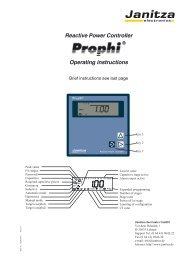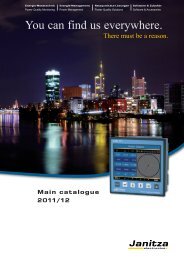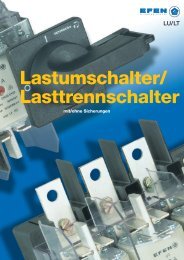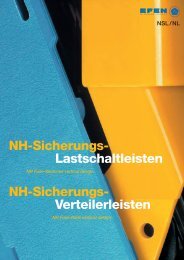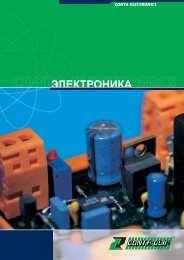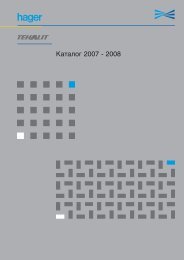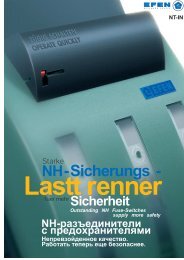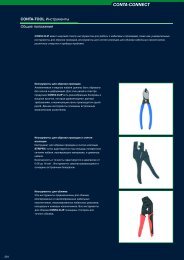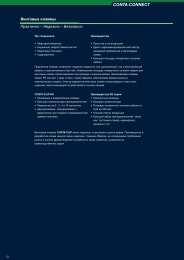Power Quality Monitoring
Power Quality Monitoring
Power Quality Monitoring
- No tags were found...
You also want an ePaper? Increase the reach of your titles
YUMPU automatically turns print PDFs into web optimized ePapers that Google loves.
Project description – industryThe problem:Transparency regarding energy costs and power quality is continuously becoming moreand more important in industrial companies. Energy consumption must be allocated tothe production stages and the final products in order to simplify pricing policies.Due to the use of non linear consumers such as frequency converters, problems oftenarise with electronic equipment and controls. Reactive power compensation systems areusually subject to particularly high loads and, therefore, require skilled engineering.Expensive peak loads can be avoided with intelligent peak demand management.The task:A supplier to the automobile industry decided to relocate its complete productionfacilities and construct the buildings in a “green belt” area. The company wanted tocollect consumption data for all welding robots together with compressed air consumptionand heating supplies and provide the data to the controlling department.The power quality from the four main feeds needed to be monitored and the fourrespective PFC systems needed to be integrated in the energy management system.Peak demand management had to be anticipated in order to reduce high electricity costsdue to high loadpeaks, shutdowns of compressors and air conditioning units etc. for ashort period will be the solution. Intranet was available as a communication medium.The solution:The UMG 96 of Janitza electronics ® , which passes on the effective pulses to theProData ® data logger, was used as a meter for electrical en er gy consumption. Otherpulse meters for compressed air and heating were also connected to the ProData ®using the pulse outputs.Four UMG 508´s were deployed in the four main feeders in order to determine thepower quality. Four Prophi ® 12TS reactive power controllers were also visualisedusing the RS485 in GridVis software. Distinctive feature:The four PFC systems work as a so-called mixed operation, which means that the baseload is compensated using the conventional contactors. The rapidly changing loadproportions, as caused by welding systems, are switched using thyristor modules.This means that dynamic PFC can be created for almost the same price as the conventionalcompensation system. A globally unique feature of the Prophi ®controller. The UMG 511 works as peak demand management and as a master fordownstream WAGO modules as well as a gateway for the RS485 bus cable toEthernet/TCP/IP.214



